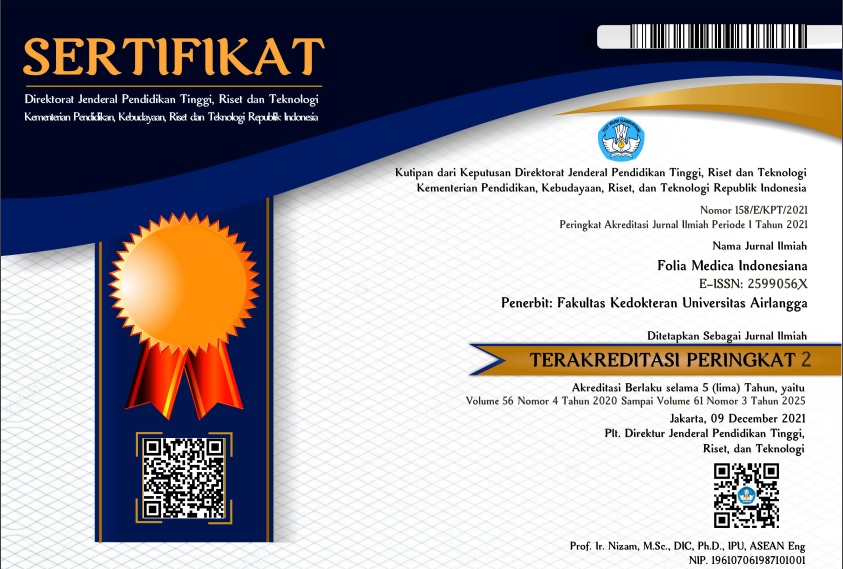ORCID ID
Lilik Herawati: https://orcid.org/0000-0002-8014-6952
Abstract
Cases of overweight and obesity in the world increased continuously. In 2016, obesity increased by 3% in men and 6% in women compared to 1975. Overweight cases also increased by 20% in men and 23% in women compared to 1975. Overweight and obesity have been linked to an increase in adipose tissue in the body. Increased adipose tissue associated with inflammation, which one of its characteristics is an increase levels of C - Reactive Protein (CRP). This article aim is to describe the mechanism of physical exercise to diminish CRP level in overweight and obesity. Adipose tissue produces and releases various pro-inflammatory and anti-inflammatory factors such as leptin, adiponectin, resistin, TNF-α, IL-6, MCP-1 and CRP. One of the prevention and treatment of inflammatory for overweight and obesity cases is to do physical exercise. In cases of overweight and obesity, the physical exercise aims to increase energy expenditure. Physical exercise decreases the volume and amount of adipose and pre-adipose tissue as well as the number of endothelial cells and macrophages in adipose that contain pro-inflammation such as IL-1, TNF-α, CRP, serum amyloid protein (SAA), and cytokines. Physical exercise rises anti-inflammatory properties such as IL-10, IL-1ra which play a role in inhibiting the transduction of IL-1β signals and inhibiting TNF-α synthesis. Physical exercise also amplifies antioxidant enzymes such as SOD and GPX. The antioxidants play a role in fighting free radicals to reduce inflammation.
Keywords
overweight, obesity, inflammation, CRP, exercise, anti-inflammatory
First Page
82
Last Page
89
DOI
10.20473/fmi.v57i1.18258
Publication Date
4-14-2021
Recommended Citation
As'ad, Muchammad Rif'at Fawaid; Liben, Paulus; and Herawati, Lilik
(2021)
"Mechanism of Physical Exercise on Lowering Levels of C-Reactive Protein (CRP) in Overweight and Obese,"
Folia Medica Indonesiana: Vol. 57:
No.
1, Article 16.
DOI: 10.20473/fmi.v57i1.18258
Available at:
https://scholarly.unair.ac.id/fk-fmi/vol57/iss1/16






